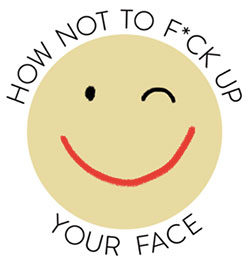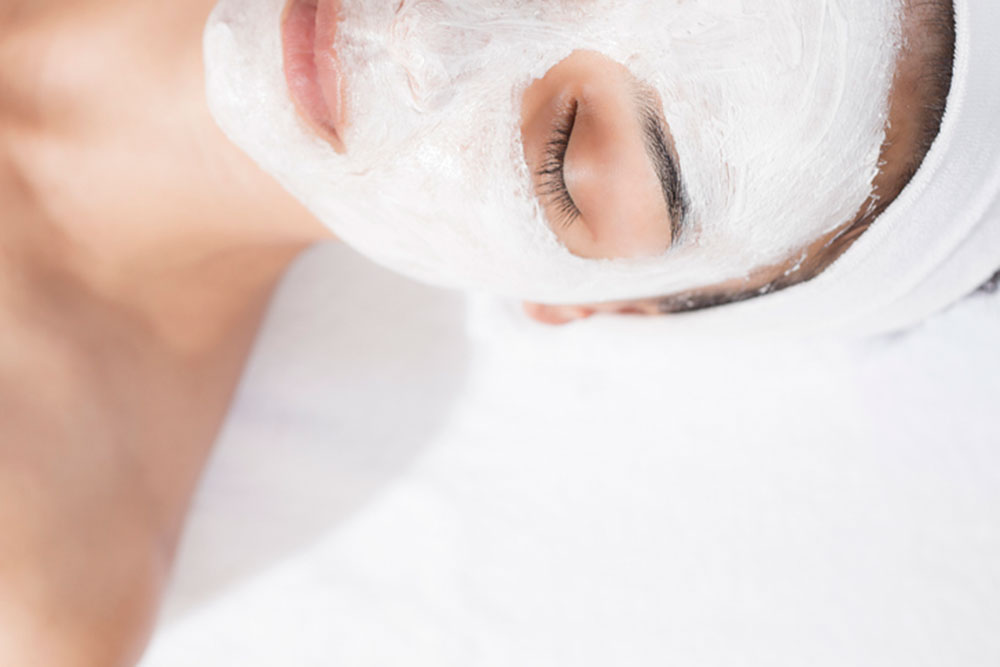By Valerie Monroe
If you’re interested in feeling happier about your appearance—especially as you age—you might like reading what she has to say about it. For more of her philosophical and practical advice, subscribe for free to How Not to F*ck Up Your Face at valeriemonroe.substack.com.

Can’t get enough Valerie Monroe? There’s more at https://valeriemonroe.substack.com.
A COUPLE OF curious people recently emailed me about whether a particular product was worth the (considerable) expense. Their innocent question put me in a such a nasty mood that I wrote something ungenerous to one of them, whom I happen to know and love. I apologized. And then I wondered why I’d been reactive.
I think it’s because I keep saying that there are no over-the-counter skincare products with ingredients that will make a visible difference in the quality of your skin by halting the aging process, and sometimes it feels as if you haven’t heard me. But it isn’t that you haven’t heard me. It’s that you don’t want to believe me—and I understand.
The beauty industry is designed to encourage your yearning, your need to keep trying one product after another in a sad and ultimately destructive cycle of dependency. Even so, I usually say, fine, spend your $250 on a serum that really only moisturizes and maybe not as well as a $12.50 drugstore lotion if that’s what makes you happy. Whatever gets you through the night, right? And then another reader writes to ask if this or that wildly expensive cream really does reduce jowls or under-eye bags—and I’m like, really? You really think this product contains the fountain of youth?
Of course you don’t, which is why you’re asking me about it; the problem is that you’re reluctant to trust your own good sense. Which should surprise no one, because you are constantly being bombarded with messages that are calculated to undermine your belief that you might be able to tell the difference between what’s marketing and what’s true.
If you’re concerned about your aging skin, you might want to take note of these two truths from the Skin Cancer Foundation:
- An estimated 90 percent of skin aging is caused by the sun.
- People who use sunscreen with an SPF of 15 or higher daily show 24 percent less skin aging than those who don’t.
Come to think of it, no one has ever asked me whether sunscreen does what it’s touted to do or if it’s worth the expense. I hope that’s because you don’t need to be encouraged to use it.
◊◊◊◊◊◊◊◊◊◊
On the subject of what works and what doesn’t, another reader query.
“Ask Val” answers your urgent questions, Vol. 36
Q: I don’t have an intense skincare routine; I cleanse and moisturize most nights . . . unless I forget. And I’m wondering if I can outsource my skincare from time to time. Do facials work over the long term? How often should I have one? Is any kind of facial better than nothing?
A: When I was a civilian—meaning before I was formally inducted into the Beauty Corps—I hated facials. Not only did I dislike a stranger getting intimate with my face (especially when that intimacy involved painfully pinching my pores), but also the unwelcome post-treatment disquisition about why I needed the products beckoning from the facialist’s shelves. As a beauty editor, the facials I submitted to were swagaliciously free, so I didn’t have to worry about protecting my wallet. Even so, I never really enjoyed them. I understand that some of you find facials relaxing; me, I’d rather have a footcial.
Because I’m biased against facials, I asked HNTFUYF DermDiva Heidi Waldorf if she had wisdom to share. And of course she did.
First, she pointed out that there’s no definition of a facial; it may include a “deep” cleansing (whatever that is), extractions, massage, steaming, a peel, a moisturizer, and even treatment with an energy-based device.
So it’s important to figure out what you’re aiming to treat that your current skincare routine isn’t addressing. If you have acne, rosacea, pigmentation issues, or any other issues that aren’t improving, Waldorf says your first step should be to see a dermatologist, not an aesthetician. These conditions often require a prescription treatment. For example, comedones (blackheads and whiteheads) can be manually extracted—ouch!—by a facialist, but they’ll always return without consistent use of a retinoid. Sun damage presents both health and cosmetic concerns that need to be distinguished by a professional diagnosis. A dermatologist can advise you on prescription and over-the-counter topicals and whether other procedures, including facials, can benefit—or potentially worsen—your condition.
So before you get out your wallet, you’ll want to know exactly what the facial entails and how you can expect your complexion to look afterward. Some treatments can leave you glowy; others, blotchy (and unhappy). Waldorf advises patients to forgo extensive extractions because there are gentler ways to speed the process of eliminating blackheads with exfoliation and suction (like with the hydrafacial device). And a light glycolic and salicylic peel may be helpful for sun damage and acne but is most useful when it’s done regularly in a skincare routine. Also, combination treatments with light laser therapy, LED lights, and other devices give longer-lasting results, says Waldorf.
You can see where this is going. “If you’re happy with your skin, there’s no reason to have a facial,” says Waldorf. “I’d also be wary of buying a multitude of skincare products an aesthetician recommends as necessary to complete your facial experience.
“I’m a 57-year-old cosmetic dermatologist with excellent skin and I’ve had a total of two or three facials ever. Given a lifetime of sun protection and not smoking, there’s nothing a facial is going to do to improve my skin temporarily or in the long run.
“When a spa opportunity arises, I choose a massage rather than a facial,” Waldorf says.
Though a spa opportunity doesn’t often arise for me, if it does, I’ll catch up with her in the sauna—after my footcial.


Such excellent advice!! Once on a cruise (my one and only cruise) I had a facial and bought (out of guilt or something) a $125 jar of cream which did last a long time but don’t think it did any more than my Olay Regenerist jar that cost $35/2 jars at Costco. I just paid $85 for a Clinique cream with retinol for my daughter, I am always a sucker for those promotions and cute free cosmetic bags with a couple nice cosmetics. The cream she had been using since a teenager no longer works (she is now 52) and she said she needed something stronger hahaha! We will see, as of course I think she looks great! At 76, I am sort of satisfied with how I look but am trying to use more sunscreen…. True the sun ages us more than anything. 🙁 and I do love to be in the sun.